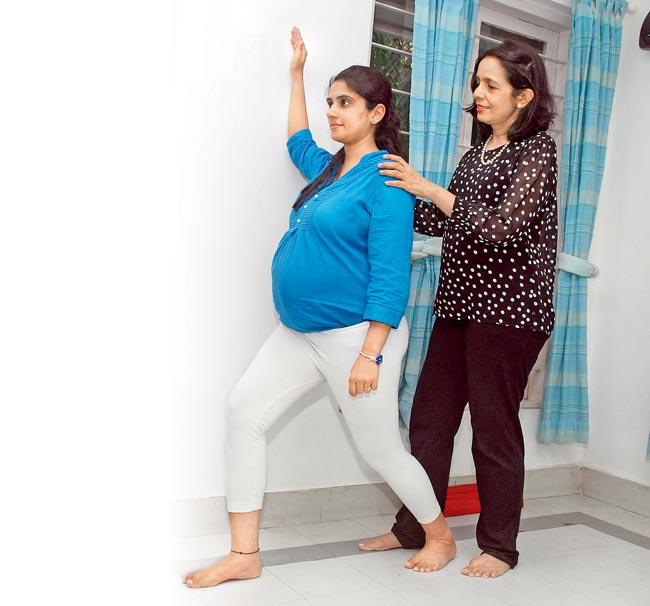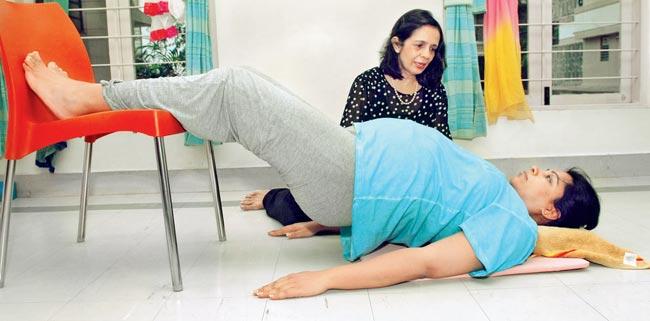New research proves that a mother's weight during pregnancy can determine the baby’s. Here are a few routines you can follow, with the help of an expert

Everything that you know about exercising when you are pregnant might probably be old wives’ tale. For instance, well-meaning friends and family members might caution that you have to relax and take it easy when pregnant but the truth is, new research proves that gaining too much, or too little weight during pregnancy can mean an obese child. The study appeared online on The American Journal of Obstetrics and Gynecology.
ADVERTISEMENT

Place a raised forearm on the wall. While still near the wall, move one leg forward and bend knee
Juhu-based prenatal care and fitness expert Dr Snigdha Mehta, founder of Great Expectations, a fitness centre for expecting women, busts a few myths. “A lot of women work till towards the end of their pregnancy and they are more unfit than housewives, who are constantly walking around the house doing household-work. Working women are in their chair for hours and I always advise that they must get up more often, exercise and take a midday break. They can stand up and gently tighten their butt muscles or walk around,” she explains.

Lie on side. Bend knees. Keep pillow between thighs. With head support, lift knee. Don’t move the rest of the body
Posture is of utmost importance, as pregnant women should sit in an upright position and in such a way that their elbows, feet and back are well-supported. “Also, it may seem that taking the public transport is unsafe, but I have seen that women who take the bus or train are fitter than those who sit in a car,” adds Mehta.

Raise your legs and place them on a chair. Tighten your buttocks and slowly lift your hips up as much as you can and then slowly lower the hips back to the floor. Repeat five times. Lying with feet on pillows or chair helps relieve swollen feet. Pics/Sameer Ssayed Abedi
The benefits of these exercises are many — they improve posture, breathing or stop breasts from sagging. They also create more space in the abdomen for the foetus or strengthen the butt muscles, which support the pelvic bones. But listen to your body, cautions Mehta. “While doing these exercises it is essential to breathe normally. Never ever hold your breath. Do them according to your own capacity, as each person is different from the other,” she adds.
 Subscribe today by clicking the link and stay updated with the latest news!" Click here!
Subscribe today by clicking the link and stay updated with the latest news!" Click here!






